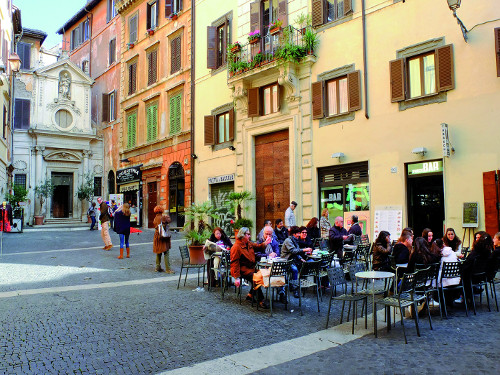Introduction
Are you fascinated by the Italian culture and lifestyle, cuisine, historic cities, art and beautiful landscapes? Have you always loved the sound and musicality of the Italian language? Perhaps you’ve visited an Italian city and wished you could chat with local people. Or maybe you would like to be able to read a menu, talk about yourself, or talk about yours or other people’s jobs.
Whatever your reasons for learning Italian, this two-week course gives you a chance to start a new exciting learning experience. You’ll start from the basics to ordering food and drinks at the bar.
Each week comprises of 3–4 hours of interactive activities, explanations, exercises and tips about language learning. It’s a good idea to keep notes either on paper or on your preferred digital device. Each week you’ll be encouraged to revise your notes and to add to your own personal phrase book and decide how best you can go about memorising and practising key phrases and vocabulary. Keep a record of your own learning journey, think about aspects you enjoy and aspects you find challenging and reflect on how you can overcome these challenges; this will help you consolidate your learning as well as adapt your own practice to your own learning style. Throughout the course, you will be invited to reflect on your learning in the consolidation activities at the end of each week.
There is also a weekly quiz for you to practise what you’ve been learning.
You’ll start by learning some vocabulary and expressions related to food and drink, but first of all, take some time to decide how you’ll allocate your time to your studies. Learning Italian, like learning any language, is a gradual process; it’s often described as ‘a marathon, not a sprint.’ ‘Little and often’ is the best approach, so if at all possible, spread your 3–4 hours over the week, rather than devoting one whole afternoon or evening. This will give you plenty of opportunities to revisit vocabulary and language structures, to revise quickly what you did last time and above all to practise and consolidate. This is the best way to learn vocabulary and improve your accent. Don’t forget to take notes of your own learning journey: jot down aspects of your learning that you find enjoyable as well as the challenging ones and think of the ways in which you overcame these challenges.
It’s also a very good idea to involve your family and friends; let them know you’ve decided to start learning Italian and maybe they can help you or leave you in peace when you need to study.
Now that you know what’s in store for you, you are ready to get started.
Buon lavoro!

